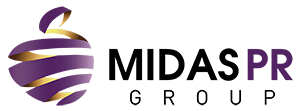Even the most staid brands now have adopted a social media strategy to promote and strengthen their messaging. Twitter, Instagram, Facebook – these platforms and those like it are ways for companies to directly target their audience, bypassing traditional forms of media and communications. An integral part of any social media campaign is the smart use of tags and hashtags; however, all but the savviest social media mavens truly understand what they are and how they should be used.
@ or #
Hashtags (#) seem to be compulsory additions to almost any social media post. But sometimes, they may appear questionable, especially if they seem too simple, like #Monday, or really long, like #VegetarianTurkeyStuffing. Basically, hashtags create categories or communities. It allows the post to be grouped with other posts on similar topics so that a user can easily find them. Consider the #MeToo campaign. By clicking on that hashtag, a user can see every post related to it, as well as see who is affiliating themselves with or commenting on the topic. If the hashtag is too generic, your post may get lost in the deluge; if it’s too long or specific, you may have trouble getting adopters.
Tags (@) do not lead to or reflect categories. They are more like call-outs to real people, companies, groups. Getting another person, be it a celebrity or a regular person, to take notice of you is now easier on social media platforms using this tag. That person or group (or, in many cases, the person managing the account for that person or group) will be alerted to the mention in you post. This can help get a conversation started, or it can encourage them to follow you, expanding your social network.
So, @ and # have specific purposes in the social media world that, when used properly, can help you strengthen your presence and messaging.
Tagging is not universal
While tags and hashtags are everywhere on social media, it does not mean that they are used the same across all social media platforms. Each platform has their own policies for tagging and in some cases, are more conducive to one type of tagging over the other.
So, you need to make sure you’re consistent in your hashtag use over different platforms, but you also have to make sure you are using the most relevant hashtags for the specific platforms. And, while @ tags usually refer to usernames for some social media platforms, the person or group you may be addressing may not have the same tag on different platforms. Therefore, you may have to be careful if part of your social media strategy is to copy and paste posts across platforms.
Midas PR, your social media expert
With the ever-changing landscape of social media, sometimes you need to rely on experts. Midas PR’s social media experts can help you organize, strategize, and even run your social media accounts across all platforms. Contact the Midas PR team to find out more.


